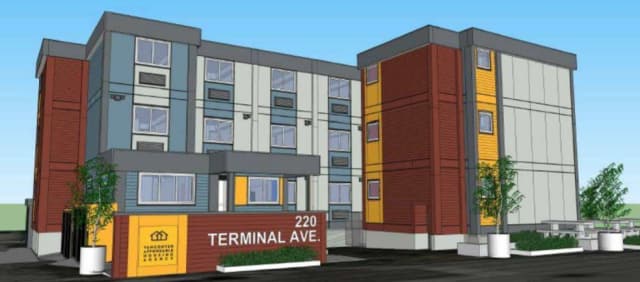
A model of one of the modular buildings springing up in Vancouver, Canada, to house the city’s increasing homeless population. Modular housing is more popular than ever, reflecting changing assumptions about what the medium can and can’t do. (Image courtesy of The Georgia Straight.)
A modular housing project in Vancouver, Canada, has been quietly gathering attention for its affordability and quick turnaround time. This project provides an excellent opportunity to think more about what modular means and what it can do.
Modular buildings, also known as prefabricated or designed for manufacturing, are built in offsite factories in sections called modules. They are then shipped to the building site and constructed with the help of cranes, often on top of a basement foundation. In the past, modular housing was relegated to the corners of the market, but it’s now enjoying a resurgence in popularity.
“The U.S. Army Corps of Engineers developed modular housing way back during the war, when they had to quickly develop structures so that they could house military and their families,” said Frank Baldesarra, CEO of Cadsoft, which makes BIM software for modular homes. “The concept of modular housing has been around with us forever. The question is, how does it become relevant in today’s time?”
Why Modular?
Gary Wyatt, Autodesk director of building design, cited several factors that have made modular more popular. The primary one is the skilled labor…

